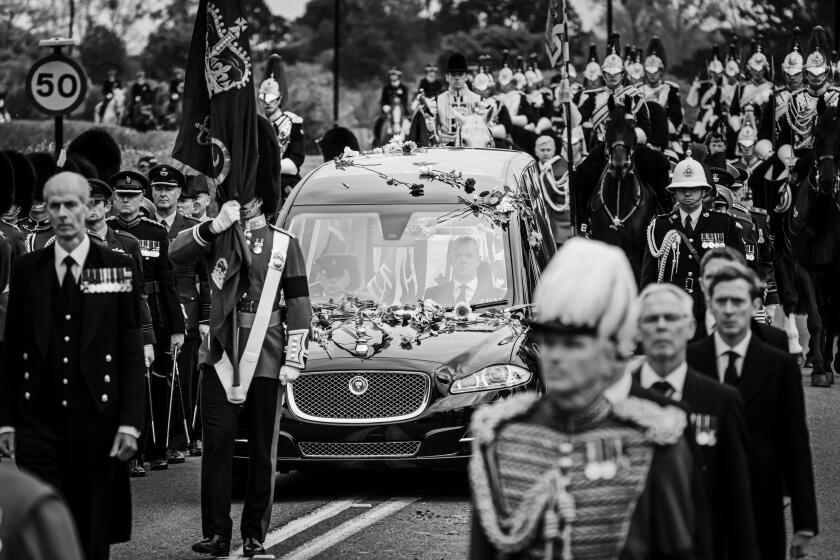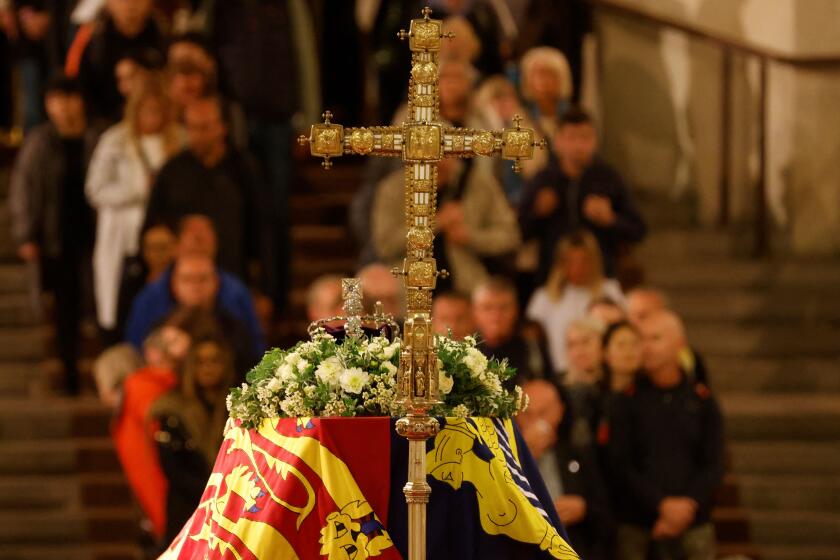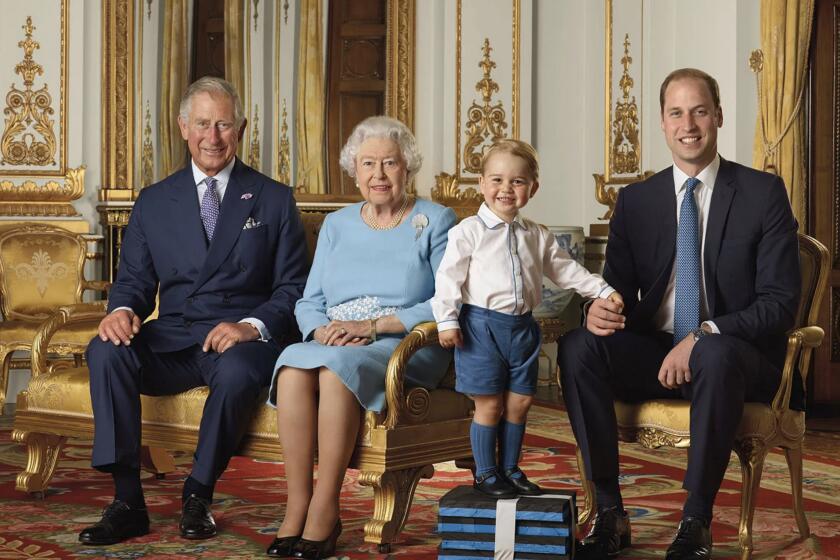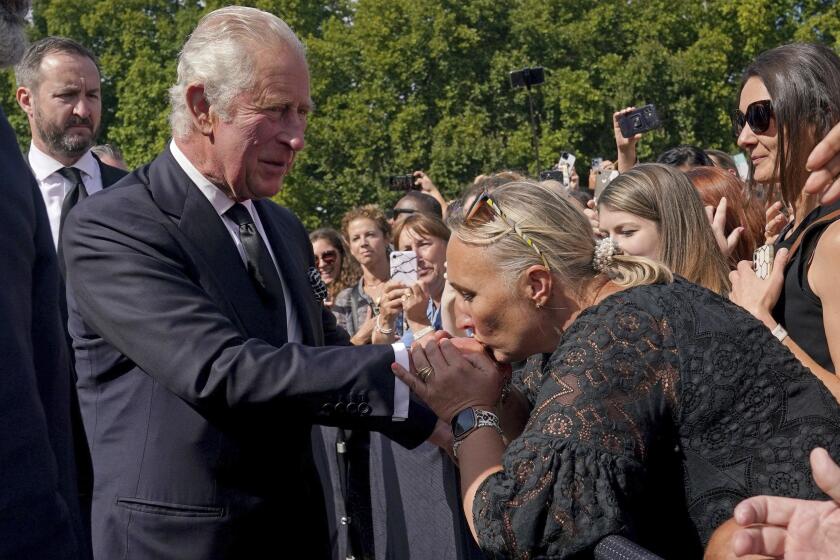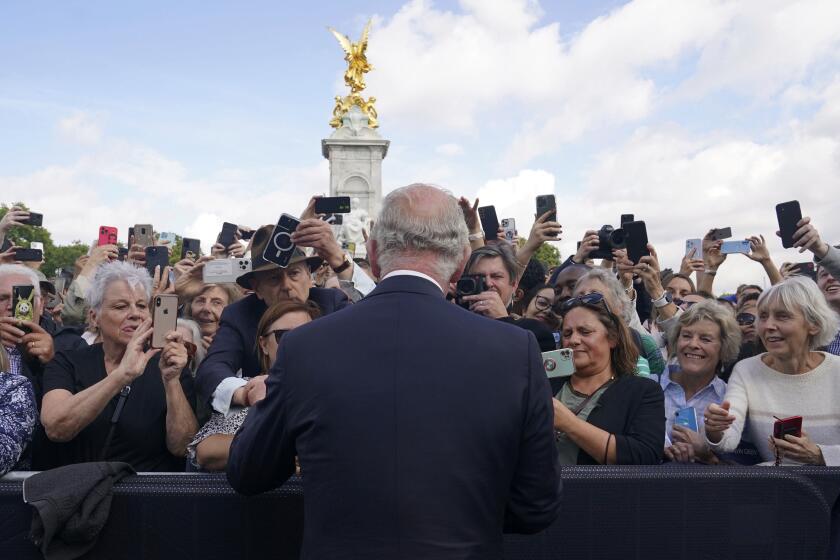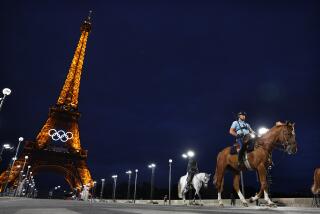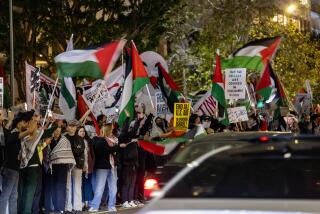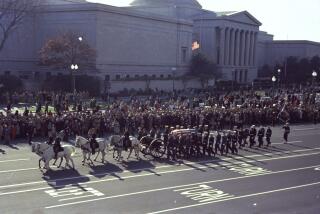Britain mounts its largest-ever security operation for Queen Elizabeth II’s funeral

- Share via
LONDON — The scale is epic: potentially millions of people thronging the streets, more than 100 foreign dignitaries and their staffs streaming in from around the world, hundreds of domestic and international government agencies coordinating logistics, large swaths of roads and transportation networks closed or gridlocked.
For London’s Metropolitan Police — the storied force also known as Scotland Yard — the funeral of Queen Elizabeth II on Monday promises to be a security challenge unlike any it has faced.
“It’s probably the largest public-order type or ceremonial event the U.K. has ever held,” said former police Chief Supt. Parm Sandhu. “Even when the Queen Mother died or [Princess] Diana, it wasn’t as large as this.”
Tens of thousands of people have already flocked to the British capital to participate in the public ceremonies in the run-up to the funeral, with railway officials warning of “unprecedented travel demand.” Crowds flooded the Mall to watch the procession of the queen’s coffin from Buckingham Palace to the Houses of Parliament, and the line of people wishing to pay their respects to the casket while it lies in state has stretched as long as five miles — a wait of 24 hours at one point. On Friday, officials temporarily turned away new arrivals to the line because it had grown too long.
Los Angeles Times photographer Marcus Yam is on the ground in London to bring a visual perspective as Britain says goodbye to the queen.
Just to manage the queue, authorities mustered 779 professional stewards from private security firms, 100 civil service volunteer marshals, 30 clergy members, 10 Red Cross workers and hundreds of other volunteers.
Yet that’s dwarfed by the logistical and security headache of the funeral itself, with estimates of crowds ranging from 750,000 to 3 million people.
The funeral of Britain’s Queen Elizabeth II on Monday will be covered on broadcast, cable and streaming platforms. Here’s how (and when) to tune in.
“It’s entirely a forecast rather than an actuality, and that creates problems, because you don’t know how to match that with the number of police officers,” said Nick Aldworth, a private security consultant who previously served as the U.K.’s national coordinator for counterterrorism.
Complicating the operation further are the heads of state and government leaders — including President Biden — who will begin descending on London as early as Friday, all with their own delegation and security requirements.
So far, the Metropolitan Police have brought in 10,000 police officers from across the country and deployed 1,500 soldiers. Three helicopters are joining from the Met’s Air Support Unit, and additional surveillance cameras are being installed in what is already one of the most heavily surveilled cities in the world.
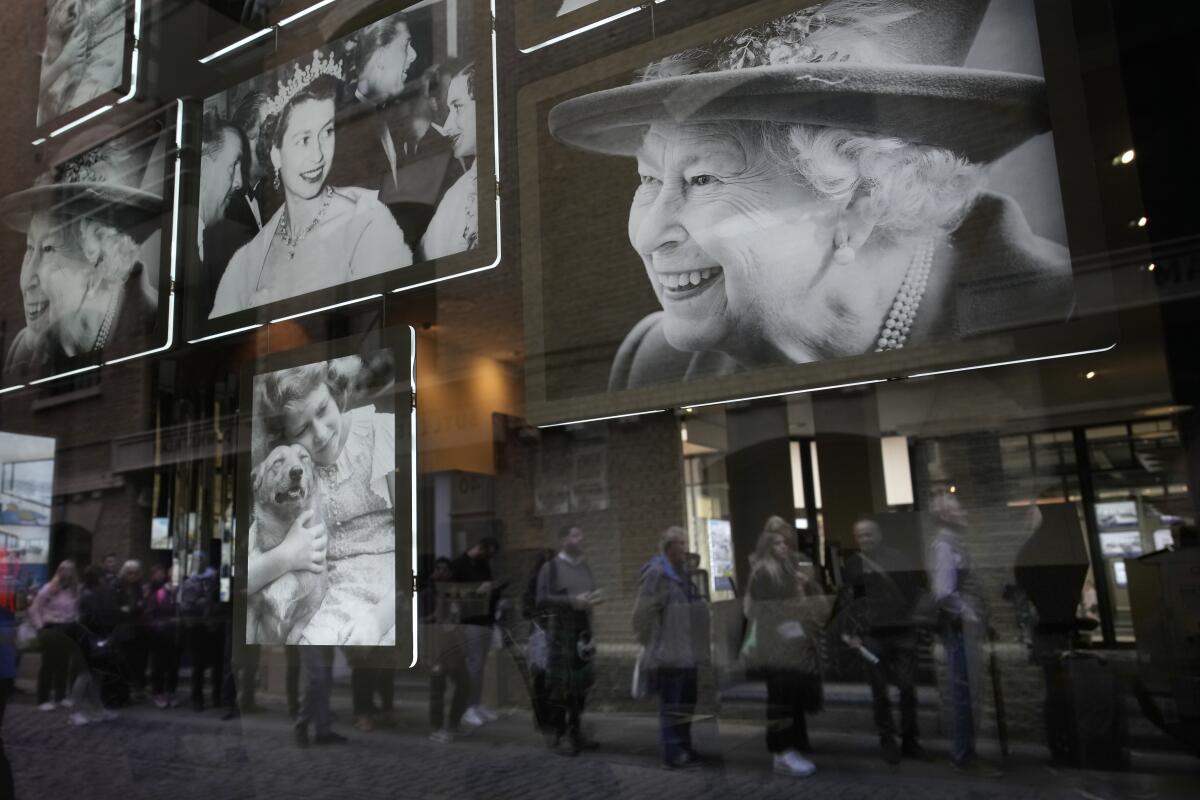
Armed spotters have taken up positions on rooftops in the area around Westminster Abbey, where the funeral will be held, as sniffer dogs roam the walkways and crews examine manholes and lampposts for bombs. More security personnel will join on Monday, and the Special Air Service, an elite army commando unit, will be placed on standby.
Still, there’s bound to be risk — from pickpockets or worse, said Raffaello Pantucci, an expert on counterterrorism and radicalization at the Royal United Services Institute think tank. The main fear when it comes to terrorism is so-called lone wolf attacks, those conducted by people acting on their own with no coordination with militant groups.
“That’s the dominant part of the threat that they can’t control,” Pantucci said. “They’re volatile and hard to predict.”
The police have a number of built-in advantages around Westminster Abbey, which sits a stone’s throw from the Houses of Parliament.
Barring tragedy or revolution, Britain is set to have a man instead of a woman on the throne for the next 75 years at least.
“That’s a heavily fortified area of London. You have permanent barriers, thousands of police and comprehensive surveillance systems,” said Aldworth, who once headed security for the Parliament.
Beyond that is what Aldworth termed the “last mile,” where people could be vulnerable to attack as they leave transportation hubs and walk to the ceremonial area.
“We know terrorists like to attack crowds, and you can’t stop a lone actor, someone with a knife or what-have-you. But there are large numbers of police officers — they’re everywhere — who can respond quickly and effectively to any malicious activity,” Aldworth said.
Not everyone is pleased about the extra policing.
A rising tide of anti-royal sentiment thrusts a British throne without Queen Elizabeth into unstable territory.
Although anti-monarchists and republican activists have mostly kept a low profile during the mourning period for the queen, some protests have ended with police arresting demonstrators. That includes Paul Powlesland, a lawyer who was threatened with arrest when he held up a blank sign near Parliament Square. Public anger over the authorities’ response prompted the police to issue guidance to officers to ensure the incident wouldn’t be repeated.
“A period of quiet mourning for the queen is fine, but using that period to cement Charles’ accession as king and cracking down on any dissent to the accession as disrespectful is outrageous,” Powlesland said in an interview with British television.
King Charles III is set to host a reception Sunday evening for visiting heads of state. According to a government document leaked to Politico, visiting leaders cannot take their cars to the funeral the following morning and instead will be moved en masse by bus to Westminster Abbey. Exceptions will be made for some high-risk dignitaries, including Biden, who will travel in his own armored limousine. The British government has faced backlash over what some diplomats call an unfair two-tier system.
Start your day right
Sign up for Essential California for the L.A. Times biggest news, features and recommendations in your inbox six days a week.
You may occasionally receive promotional content from the Los Angeles Times.
Another problem is how to mitigate risk for members of the royal family as they do “walkabouts” to greet the general public. The main threat is from individuals who are obsessed with the royal family and who might manifest that obsession in violent ways.
“Not all fixated people pose any kind of risk; we all fixate to a certain degree in our lives over friends, hobbies, family. But you’re looking at those who are fixated to a high degree,” said Andrew Wolfe Murray, a former investigator with the Fixated Threat Assessment Center, a specialist police unit set up jointly by the Home Office, health department and Scotland Yard. “A number of those people could be suffering from a major mental illness.”
Much of the work assessing these threats happens ahead of time, Murray said, since those who are fixated on a certain individual usually find it important for the object of their obsession to know of their presence.
“They tend to arrive early and communicate the fact they’re there,” he said.
Royal mourning will temporarily turn attention away from Britain’s many pressing problems and how a new prime minister will tackle them. Then what?
Sandhu, the former chief superintendent, said the royals are briefed ahead of any walkabout on a list of about 10 to 20 fixated individuals. Close protection teams around them keep watch.
“They’re not watching the royal family but watching the crowds, and they’ll have been trained in body language and body awareness,” she said. “So they’re looking for the individual who is not smiling or respectful, someone who is showing signs of agitation.”
Despite the panoply of challenges, security officials point to the fact that the queen’s funeral — dubbed Operation London Bridge — has been decades in the planning.
“My first contact with the planning of this operation was 20 years ago. It’s taken every year, polished, checked for validity,” Aldworth said, adding that the funeral of the queen’s husband, Prince Philip, last year provided additional lessons. “I’m comfortable that the plan itself is really effective. It’ll be down to how it’s delivered on the day.”
More to Read
Sign up for Essential California
The most important California stories and recommendations in your inbox every morning.
You may occasionally receive promotional content from the Los Angeles Times.
